Many people in dense urban settings seek to maximise their spaces and to re-establish a lost connection with nature. As such, the idea of a vertical garden or living green walls has become increasingly popular. The green wall craze was started by French botanist Patrick Blanc. He’s famous for creating dozens of so-called “living painting” or “vegetal wall” installations around the world.
Blanc’s idea was simple: intentionally cover a vertical built structure with greenery. But it has since blossomed to encompass any system of bags, pots or panels that has an integrated water supply. Following his lead, many companies now offer modular living green wall systems. These make vertical gardens completely idiot-proof and really open up the concept to gardeners of all abilities.
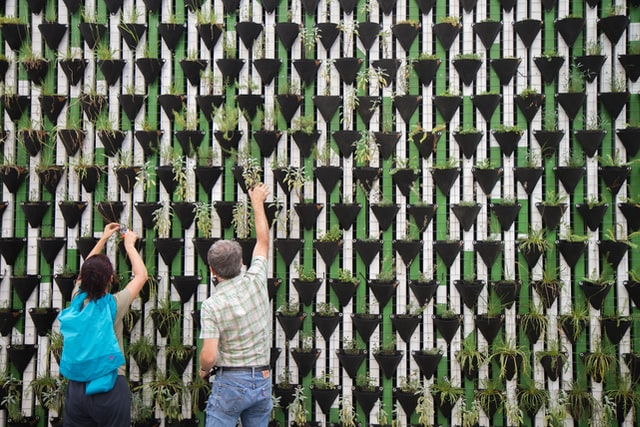
But the definition of vertical gardening can be loosened up even more. It can include any method of growing plants on the vertical plane rather than the horizontal, whether with an irrigation system or not.
There are so many ways you can make a vertical garden and that’s why I’ve curated a broad selection of ideas just to show you what’s possible. Ready to take your gardening up another level?
1. Le Original “green wall”
One of Patrick Blanc’s classic installations is in the interior of an apartment in France. The interior garden wall measures 6×7 metres, resulting in a massive wall feature in the apartment’s living room. Blanc uses mainly metal structures lined with felt, which the plants grow into. A stunning mix of leaf colours, shapes and textures, vertical gardens Blanc’s famed ones can be hung on walls or freestanding.
2. Vertical pallet garden
Choosing your mount or support structure will really come down to your personal taste and the aesthetics of the rest of your home. It’s a good idea to go with complementary materials, such as a simple, raw pallet vertical garden against wooden floorboards.
Remember to anchor your vertical garden structure in place in some way before planting, for safety. The heavier the plants, the more solid the structure should be, and this means some will become quite heavy. It’s a good idea to have a carpenter assess that your designated wall is able to handle the weight.
3. Painting with plants
An abundance of plants brings a plain wall to life and changes the mood of a room to create a healing, peaceful space. Better for the planet—a lush planting but a small footprint—and better for you thanks to the air purification abilities of plants. Create a gorgeous green tapestry to connect your indoor space to the outdoors. For a shady indoor area, plants that will do best include ferns, bromeliads, begonias and violets. A painted green wall also adds dramatic impact, and the vertical garden wall gives it texture. If you want to add a focal point to a room, check out these feature wall ideas or skip ahead and find a painter near you.
4. Parts of a whole
The beauty of going with a system of discrete, interchangeable elements? The sheer ease of removing any individual plant for maintenance. Check out the gorgeous colour gradient installation outside the store Pigment in San Diego. It’s made up of 88 self-watering wall planters (made from 100% recycled plastic), and stuffed with bromeliads and succulents.
5. Fill in pergolas
Pergolas and other exterior structures are ideal for covering in vines, moss and other climbing plants. Some plants will need to be physically attached to your structure. Others have a twining habit and naturally loop themselves around the material—ask a garden designer for tips on a planting palette.
One advantage of creating an outdoor vertical garden is that there’s plenty of natural direct light to help them thrive. So you’ll be able to choose sun-loving plants.
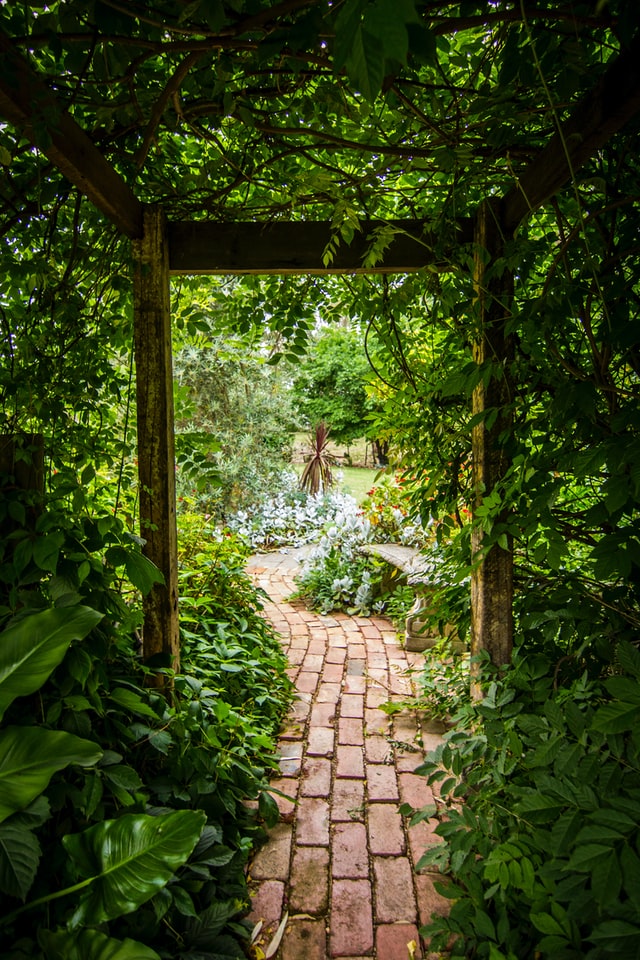
6. Indoor vines
Training plants to climb up the inside of your house and across the roof is a great conversation starter. You can grow a range of vining plants in containers, and they’ll start to ramble wildly. Vertical gardens give you the chance to extend your greenery far beyond the confines of their pot. And you won’t need more floor space, soil or water to do it!
7. Easy vertical garden
The space-saving advantages of vertical gardens are undeniable. Stacking containers means you maximise your space and you can still garden a whole range of plants even if you don’t have a big yard. A humble arrangement of brightly-painted wooden crates would be a great way to inspire the kids to get involved in gardening.
8. Hanging gardens
When you have no lawns, you can always look upwards for ways to bring greenery into your outdoor space. Creating whimsical green curtains out of hanging vines is a moody way to enliven any area. In some cities around the world, walkways of apartment complexes are draped with ‘hanging gardens’. These also create a verdant view for the apartment dwellers.
9. Succulent outdoor green wall
For a façade that faces the brutal sun all day, select tough, sun-loving succulents including Rhipsalis, sedum and crassula. Succulents are a great choice for an outdoor green façade. They’re low maintenance, water-efficient and even fire-resistant. They also come in wonderful, unusual colours.
10. Saturation
The density of a full green wall means it acts as a great privacy barrier. And it will also help reduce noise as the thick plant walls become natural acoustic barriers. Green wall also helps filter the sun’s rays and channel winds. The trick is to design for density with certain plants that will form substantial foliage quickly. Ensure they’re also easy-care (suggested species include star jasmine, wisteria and honeysuckle).
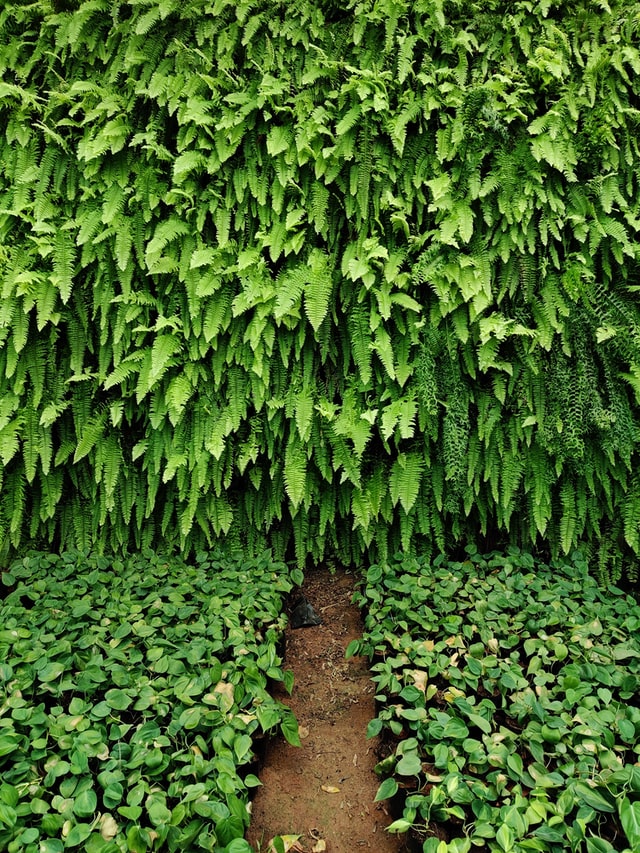
For a neat contrast to a lush green wall, make sure the rest of your yard is minimal and orderly. Also, it makes for a very pretty privacy fence too!
11. Indoor green arch
Vertical gardens are a great way to attract attention to a particular feature or space or to disguise unattractive elements. If you can train a plant to grow across your living room support beam, it will create a lovely organic archway and draw attention to the room division. It’s a great way to combine the indoors and outdoors in a seamless transition.
12. Home fernishings
Growing vertically allows you to create a curious feeling of the outdoors being, well, indoors. Hanging planters with cascading greenery are perfect for dressing up windows and balconies. But when dangled from the ceiling at varying heights, the effect is three dimensional and immersive.
If you do decide to go for a wilder, jungle look then choose plants and hangers that are subtle, in contrast to the bushy greenery.
13. Flow on effect
Certain plants are better suited to vertical gardens than others. For example trailing, cascading plants with their romantic waterfall aesthetic is ideal for hanging vertically. Looking for indoor plants that cascade beautifully? Try Boston ferns, string of pearls and string of hearts, heartleaf philodendron and spiderplants.
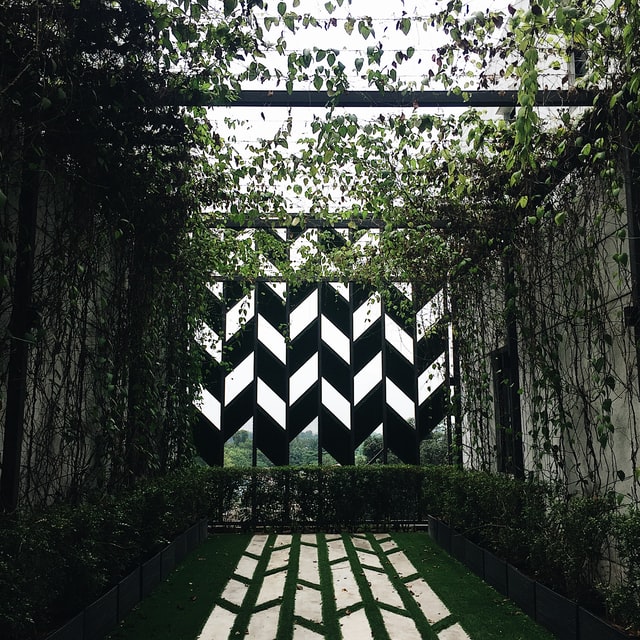
14. Vertical veggie garden
A modular, stacked vertical garden is perfect for growing herbs or vegies rather than houseplants. Vertical edible gardens are ideal for small spaces, and it’s considered a “greener” way of gardening with its smaller footprint. You can repurpose pallets or if you’re handy, whack together a quick DIY wooden stack.
Think about planting fruit vines like kiwi or passionfruit and vertical growing veg like peas and tomatoes. Then add in some edible flowers like vining nasturtium. You might also like to check out our ultimate guide on how to start your own veggie garden for pointers.
15. Cascading vines
Historically, vines have been used to decorate garden arches and pergolas. Classic favourites include climbing roses, wisteria, clematis and honeysuckle. Some annual and perennial vines prefer sun and some prefer shade, so placement of your vertical structures is important.
Try to choose vines which don’t get too heavy as they climb, such as cypress vine and scarlet runner bean. Vines like clematis and ivy are easy growers in full sun, while some vines like climbing hydrangea or chocolate vine prefer more shade.
16. Trailing over balconies
Using plants to fill a vertical plane is becoming more popular in urban environments. This is because there’s less space and less natural connection to nature. Bringing nature in, or just making it more salient, creates a sense of peace and a feeling of connection between humans and nature. Apartments with balconies are ideal to engender this sense of harmony with nature. But they also bring that idea of community, through sharing the greenery.

17. Tropical
A green wall with oversized, mammoth foliage will create instant tropical feels. Perfect as a privacy screen for your pool area. (Interested in pool design? You might also like to read our articles on pool ideas, paving ideas or decking ideas.)
18. Di-vines
For a pretty, swirling floral display ambling up your walls, choose vining plants like climbing roses or other blooms. For example, petunias, sweet peas and nasturtiums). Remember to choose forgiving, lower maintenance species of plants. And ideally position them near plenty of natural light.
What’s so good about vertical gardens?
- There’s plenty to love about vertical gardens, whether indoor or outdoor. They create such a gorgeous tapestry of texture and colours. So the aesthetics of green walls clearly plays a major role in their surging popularity.
- They simply look impressive with their added dimensionality and their striking incongruity on the vertical plane.
- Plants help us tap into nature’s calming power and will also actively filter out air pollutants and contribute to good air circulation.
- They add extra insulation to your home, reduce heat, bring down cooling costs, lower your energy bill and save on harmful emissions output. How cool is that?
- Vertical gardens are also less work to set up than traditional garden beds with less soil preparation and digging.
- Less maintenance, a smaller watering area and gravity make irrigation very efficient.
19. Living shower wall
Having a living wall in your shower certainly provides ease of watering. Shower green walls are becoming quite popular. They look their most stunning in a minimal, spa-styled space where their bushiness will be best set off. Ease of watering is a bonus. But you’ll also need to carefully consider the growth habit of the plants you want to install, and where their roots will be allowed to grow.
20. Thriving vertical edibles
Vertical gardens are perfect for creating a kitchen garden whether in some shelving, planters, pots or hangers. Grow some leafy veggies like lettuces and spinach, and some trailing herbs like oregano, thyme and marjoram. Add some pretty edible nasturtium flowers! You might also like to read our tips on how to grow potted herbs on a balcony.
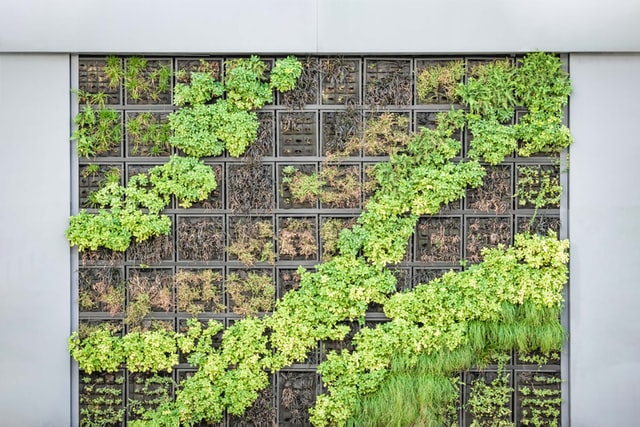
21. Succulent artworks
Succulents are becoming very popular in vertical displays. They come in a wonderful range of textures, colours and shapes making them ideal to liven up a dull wall. What’s more, they’re low maintenance, have low water needs and are hardy enough to grow under a lot of harsh conditions. Make a unique statement piece with DIY vertical garden artworks!
22. Living green curtains
For a green space that has privacy but doesn’t create a sense of isolation, create a ‘green veil’ of creeper plants grown on mesh. The plant veil will be a softening layer to the hard spaces and creates a green view where there previouslywasn’t one. The usual benefits of green walls apply; filtered sunlight, purified city air, and bringing Mother Nature in closer.
23. Simple vertical planter
A raised bed or “no dig” gardening is another kind of vertical gardening. And it’s perfect for when you don’t have much room for soil and really want to maximise your vertical space. However, raised beds can take up a fair bit of horizontal space as well. But you can still squeeze a raised garden bed into a tiny space, such as a balcony. Look for streamlined planters with a trellis already attached to guide the plants upwards. We’ve also got a stack of raised garden bed ideas for you too.
24. Green facades
Sometimes a theoretical distinction is made between green walls and green facades. Facades usually preference climbing plants with roots in the ground, growing up a trellis. But the line is getting blurry. Green facades are now often also genuine green walls. In other words, growing sideways out of vertical structures, often using permeable pavers. And it’s not just about aesthetics. Exterior vertical gardens provide buildings with protection and insulation.
(Like permeable pavers? Read more about your options for paving including ones that can grow greenery.)
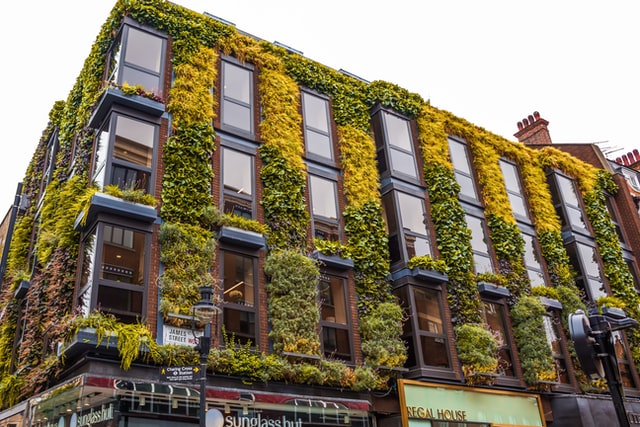
25. Wall boxes
Having upward-facing planters means you have more plant choices than with a forward-facing green wall structure. So you can think about creating displays with plants with deeper roots as well. Succulents are a great choice for wall boxes and planters because they’re lower maintenance than many other plants. They also have plenty of trailing plant options, which look gorgeous flowing over the edges of containers.
26. Build a wall
California’s famous “largest green wall in the state” is an oversized living wall that was once a mere construction trailer. It’s made up of local natives that attract pollinators, thereby earning its keep in the local ecological system. And it also incorporates edibles in containers. For more ideas for front garden impact, you might like to also read our article on front garden designs.
27. Tiered garden
A terraced or tiered garden is another form of age-old vertical gardening, developed to handle very steep or sloping sites. Levels are artificially created with retaining walls, steps and ramps. So it’s possible to garden on a site that would normally just wash downhill.
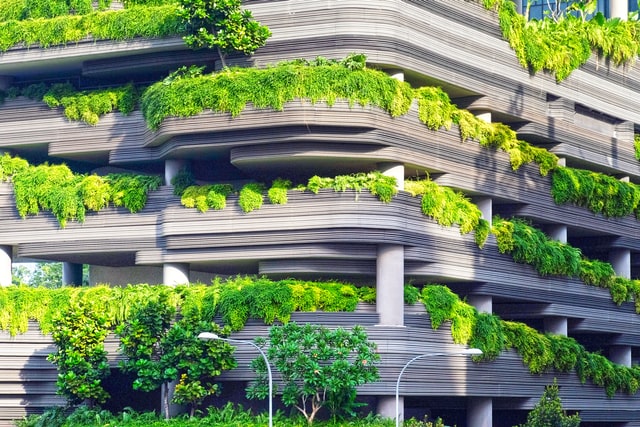
28. Metal grid
Pegboards and metal grids are an easy way to create a support for hanging wall planters. They allow you to design your own customisable modular living wall system. For a gorgeous modern look with pleasing minimalism, suspend timber plant holders from pale leather straps on a grid.
29. Courtyard vertical garden
A vertical garden gives you maximum visual impact when you only have a minimal space. But a vertical garden also offers added benefits for homeowners. For instance, providing a home with insulation against temperature changes, and protection from UV radiation, heavy rain and winds. They also give dwellers more privacy and can block out high-frequency noise. If you have a smaller outdoor area in your home, also check out these courtyard ideas to reallymaximise your space.
30. Living wall with planters
Make your life easy by choosing from the various kinds of self-watering wall planters that are on the market now. Designed to be water efficient and low maintenance, they also come in so many chic styles. I love metallic planters, but ones made of natural materials also look stylish.

31. Insta-worthy
Not only do living green walls purify the air and bring nature in, but they also just provide plenty of “wow factor”. And where else would you expect an insta-worthy space than at the headquarters of Instagram itself? The company features a minimalist white setting contrasting beautifully with a living wall. The wall spans two floors and is supplemented by a champagne, fresh juice and gelato bar. A step up from the average office water cooler space!
32. Extreme green architecture
Green architecture, which makes major use of vertical gardening, is having its day. So-called “green building design” has the aim of minimising human impacts on the environment. This is achieved by creating fully-sustainable urban living models. And these bring all the health benefits that go along with greening up our lives. High-rise structures are being reinvented as environmentally friendly dwellings. Meaning they have sustainable initiatives built into their fundamental design. Rising Canes Pavilion in Beijing is one such development which uses nature as a primary design element. It’s an ecological modular system can expand into every direction, as population density demands. It uses wholly recyclable materials (bamboo and ropes, no nails or screws). And incorporates green facades, vertical gardens and roofs, Terraces are vegetated with communal edible gardens. The ultimate vertical garden?
Where to start?
The kind of vertical garden you can install in your home will depend on your environmental conditions. The temperature, available light, whether it’s near airconditioning or heaters and so on. This will determine the type of plants that will thrive in the space. It’s a good idea to mix plants that have similar care needs to make maintenance simpler.
A huge variety of plants can be added to vertical gardens. The best ones are low-growing plants with shallow root systems. And obviously all the creeping vines and trailing seasonal bloomers, especially those with thick, lush foliage that will fill a space. For example, wisteria, geraniums or petunias. Succulents, ferns and other drought-tolerant species will also do well. And they’ll require less maintenance.
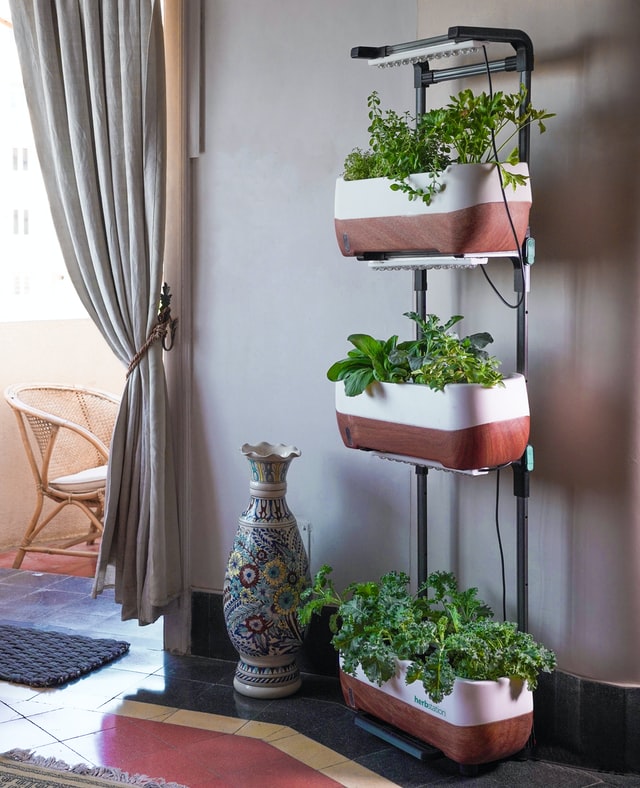
To mount them, you can buy ready-made vertical garden structures, modular systems and kits, but it’s also very easy to DIY your own simplified version. Wooden pallets are a popular choice. But lattices and trellises could be made from anything—garden netting, even old pocket-style shoe organisers. Existing garden structures like fences, pergolas, arches, arbors and garage shed walls are also popular spots. And, of course, wall boxes and planters can create an instant vertical garden – there’s ample choice here.
Now it’s over to you—which vertical garden is your favourite? I’m inclining towards a vertical potted herb garden for my kitchen—seems like an easy way to test the waters!
Whether you decide to grow a green wall from scratch or install a modular system that you can instantly fill with gorgeous plants, it’s a great idea to get some help from a professional landscape designer, especially someone who really understands vertical gardening. You’ll get the lowdown on the best plants to use for your project, and they’ll also be able to help you with any questions you have regarding automatic watering systems. Happy planting!



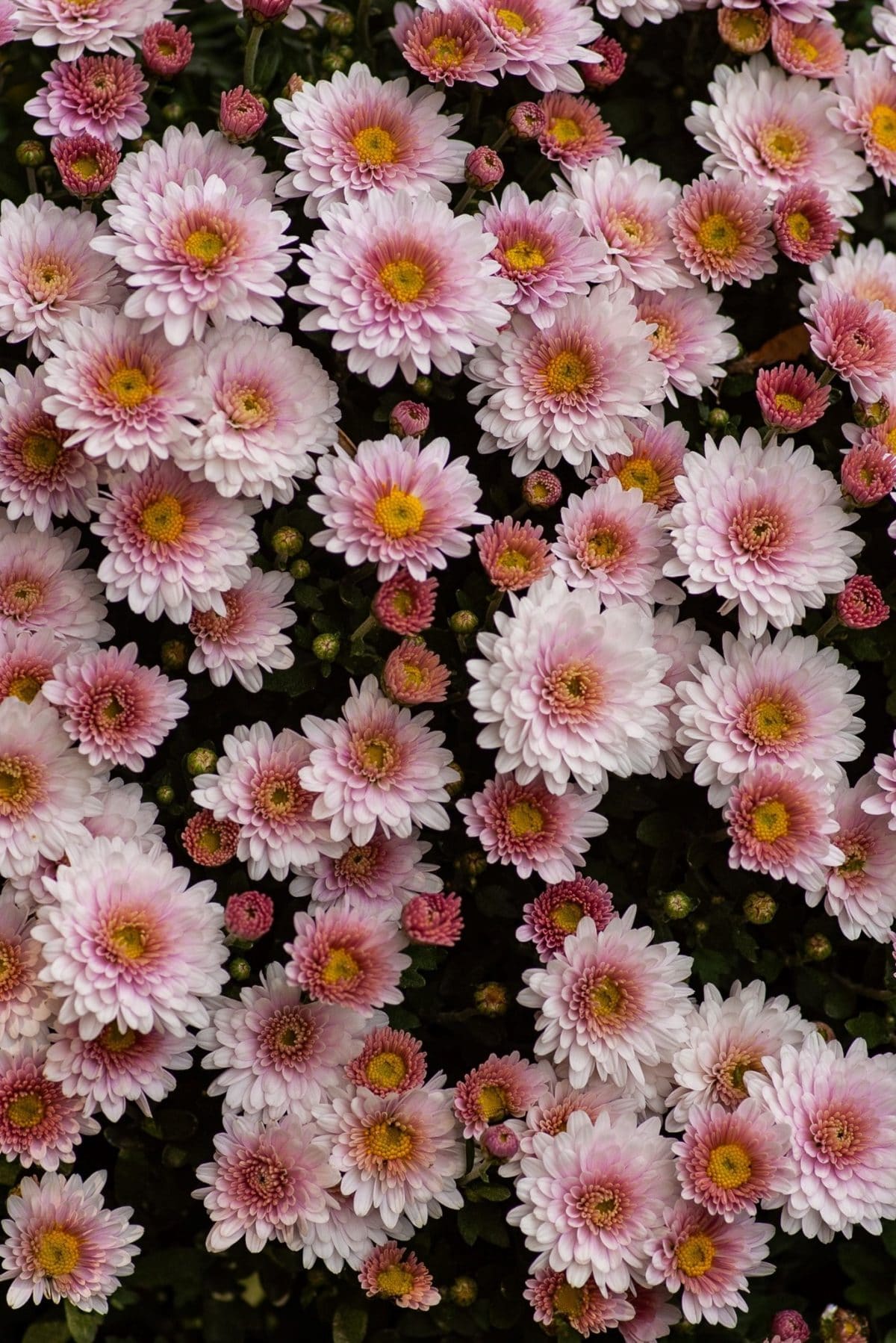


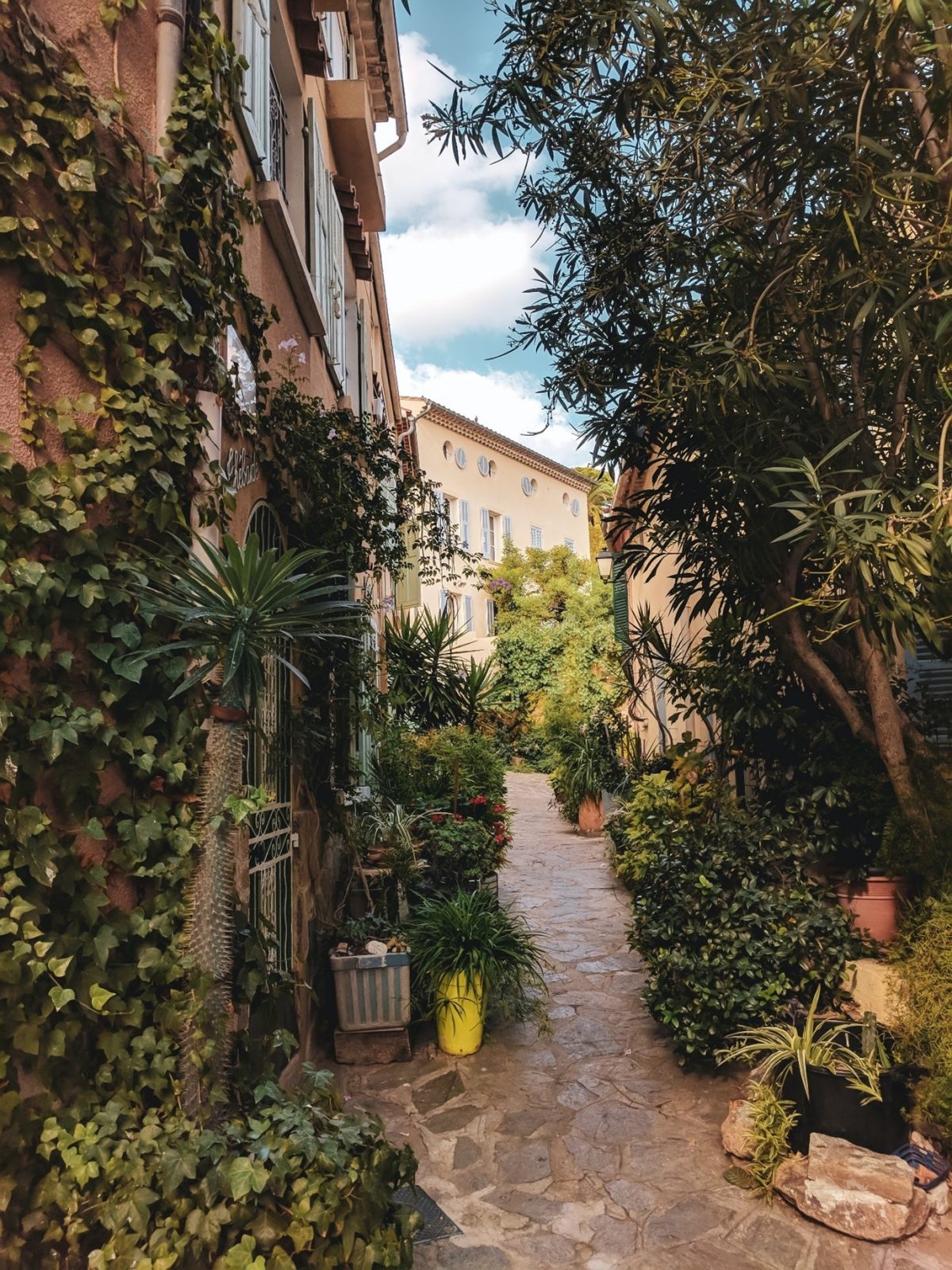
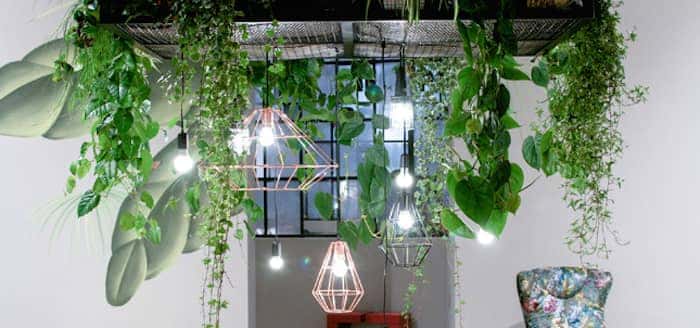
Pure delight. I want to make a vertical garden and your ideas have helped me greatly…..
My goal is to plant a hedge-like vertical garden that can produce food for my whole community. The purpose of a vertical garden is to save space and tidy up the outside of your home, not to mention add a nice splash of green to an otherwise rather dull foundation. Of course, if you have the money, building a house with a nice backyard, Hedge Service, and garden would be ideal but quite expensive and most people don’t have that luxury, myself included.